Just when you thought those newspaper boxes at the corner were becoming a thing of the past, here comes this impressive video announcement from The New York Times.
Wow, The New York Times is about to expand its journalistic offerings so you can experience it in three dimensions, just by picking up your phone.
Just as we have suspected, it is the phone where all the action is, the one king of the media quintet. To read about it in The Times is to imagine a different world as far as the way we will be able to get news and, more importantly, to get engaged with it, to look at things in a different focus, to get closer to people and places.
Something profound has happened to your camera.
Its very purpose — capturing images — has expanded to include a new role: creating a bridge between our physical and digital worlds.
How will this work?
According to the Times’ piece, with a smartphone camera, you will be able to see an Olympic figure skater suspended at the peak of a quadruple jump as if he were floating in your living room.
The camera can become a window into a world enhanced with digital information — adding a piece of sculpture to your bedroom or a car to your driveway. Neither actually there, but appearing to be and believably so.
This is likely to alter the relationship of the user and the content he seeks. It will also alter the relationship between journalist/designer and user. Engagement will take center stage for the user. Those who create and process content will have to take into account the degree to which such content will intimate with the user. The Times’ piece reminds us that “this is fundamentally what connects augmented reality and journalism”.
It will be a totally more visual presentation of news, with real life scale and physicality.
Stories that describe our three-dimensional world can be delivered in the round, in front of you. Want a closer look at that sculpture? No need to pinch your phone’s screen to zoom. Just walk up to it. For a different angle, there’s no swiping to the next image. Just walk around it.
A newspaper box in my living room
How about the newspaper box? Well, suddenly it was right next to my couch, in my own living room, and I could walk around it, see it in different angles. Just think that just as I am able to bring this metal box into my living room, and take a close up look at it from all angles, I will be able to do the same with a person, an object, a gadget or a plate of food.
Amazing!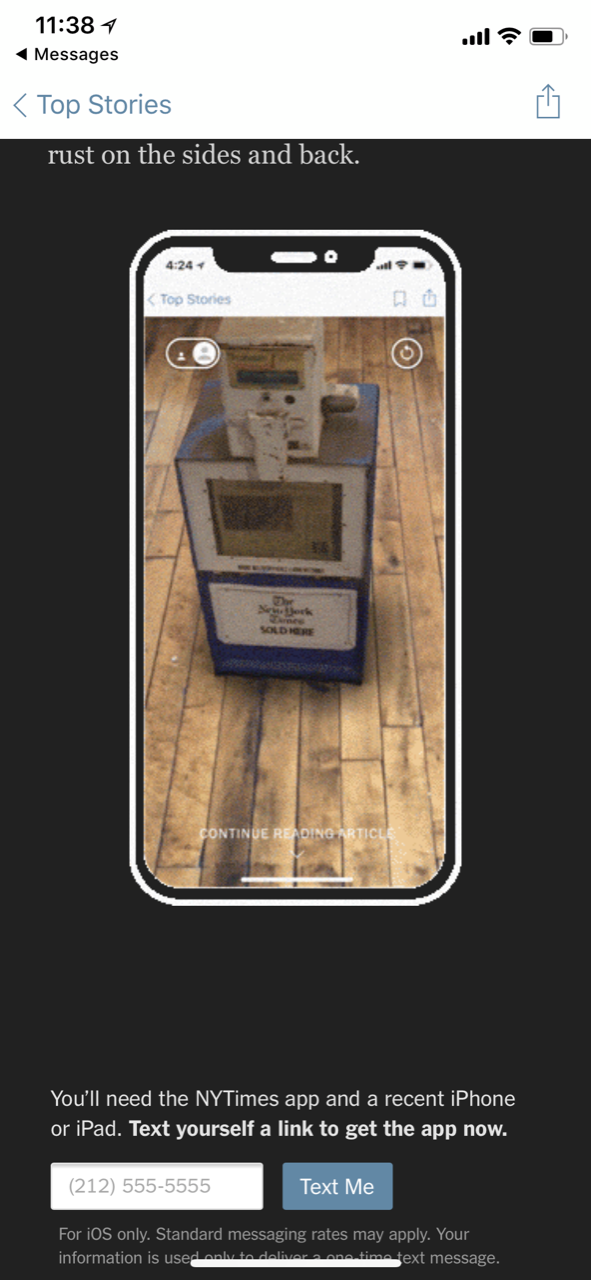


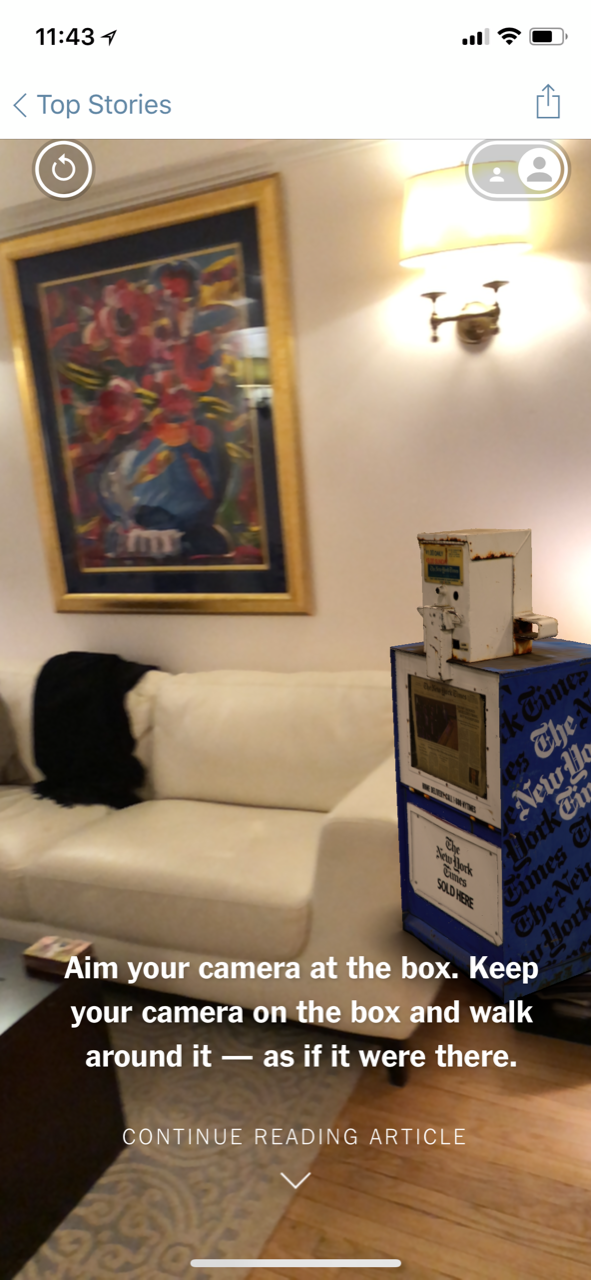
How about an Olympic star spinning around my living room furniture
Suddenly, four of the world’s best Olympians up close.
I decided to take a closer look at Nathan Chen, 18, an American figure skate who became the first to land four quadruple jumps in a program — and last year pushed it to five.
This is how he appeared, and how I was able to walk around him to get a closer inspection:
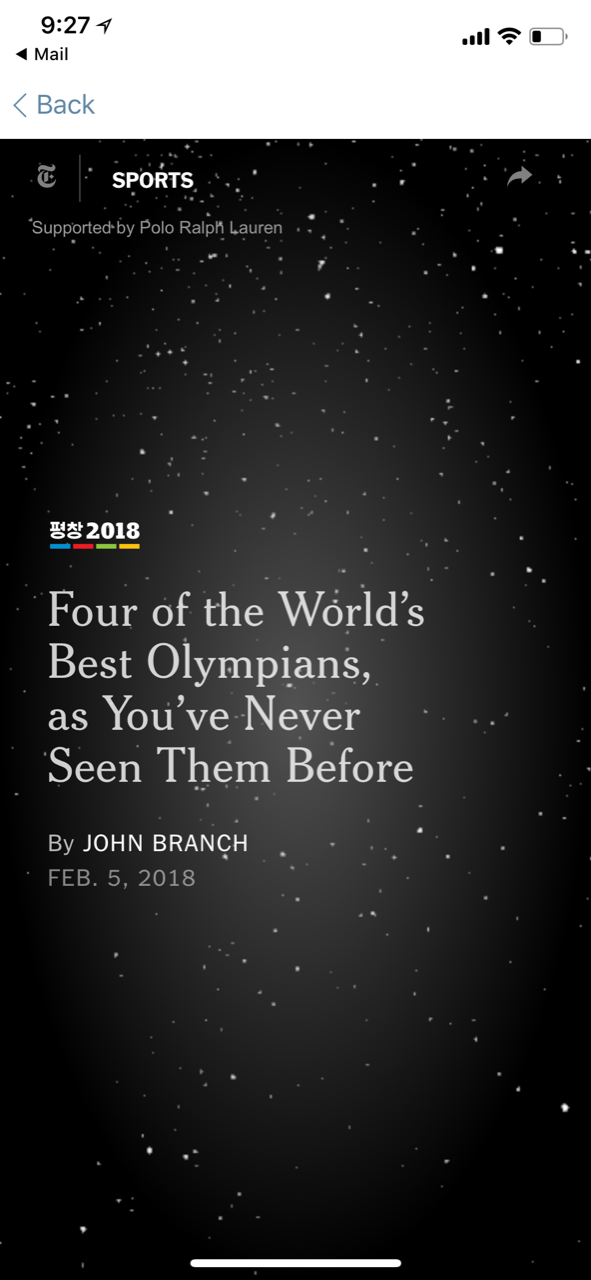
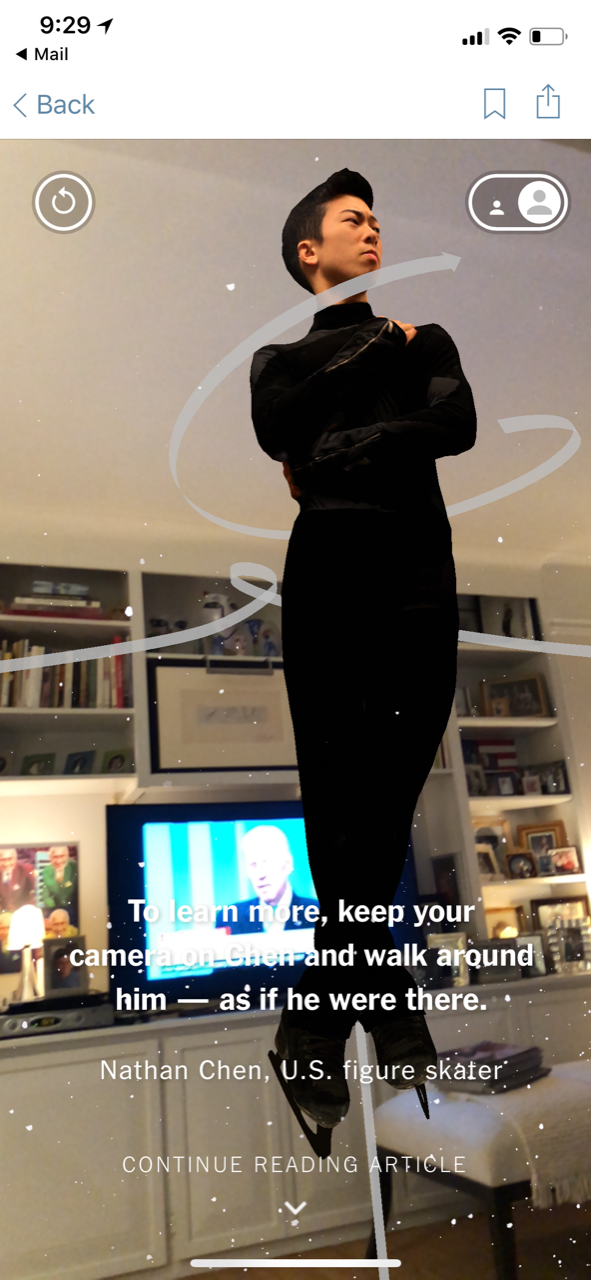
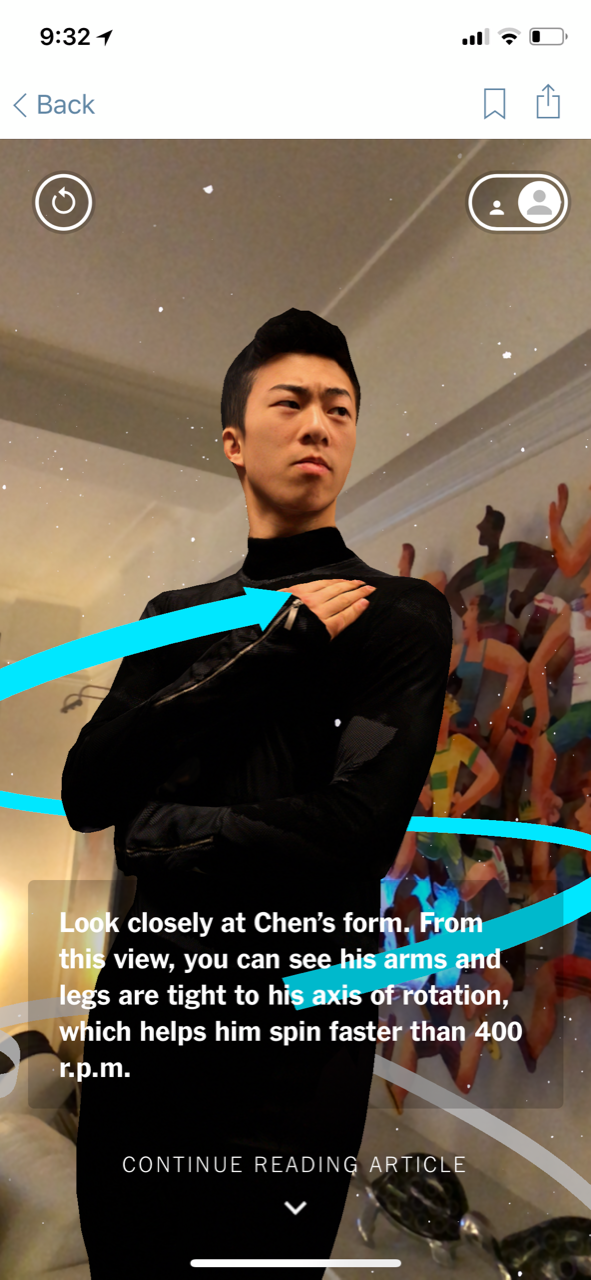
New challenges for journalists/designers
Interesting times ahead for writers, editors and designers. It will be a more visual journalism than the most visual presentations we know today.
We will have to become more aware of what the user will see and feel as she consumes information. The visual assets we select to accompany a story will have to be able to tell more of the story. There will be closer scrutiny of anything we use to enhance the story.
I have said often that we are redefining the concept of what editorial design is. For some, design applies to the aesthetics that we apply to the way we design a page or screen, how we use visual elements to illustrate a story. Today, design does more than that. Design, in its new definition, covers the user experience. We can’t call ourselves designers unless we also have a clear idea of how users utilize a specific platform to get information. Designers also need to establish closer collaboration with writers and editors. When we discuss linear storytelling for mobile, design has to do more with the selection of visual assets for the story than how the story itself looks.
Thinking ahead: Virtual Reality
The Times is introducing us to Augmented Reality as another layer to its evolutionary storytelling. In addition, there is already experimentation with the role that Virtual Reality will play with news.
I have been fortunate to have been invited to participate in an early Virtual Reality Newspaper project.
In my initial contemplations of how we would enter a world of News and Features in a Virtual Reality newspaper or magazine, what comes to mind is a gigantic menu of possibilities, sort of the spectacle one sees when standing in the heart of Times Square. Where to look first? Content that overwhelms. Images that compete with each other. That’s what awaits us as we approach content.
Pretend that this is the “contents” page of your favorite newspaper. Fun?
There are newspapers in Asia and Latin America where it is still customary to put the printed edition of the newspaper on the wall outside the newspaper building so that people can come and read it there. I imagine that the entrance into an Augmented or Virtual Reality Newspaper may be something similar, as you can see below.
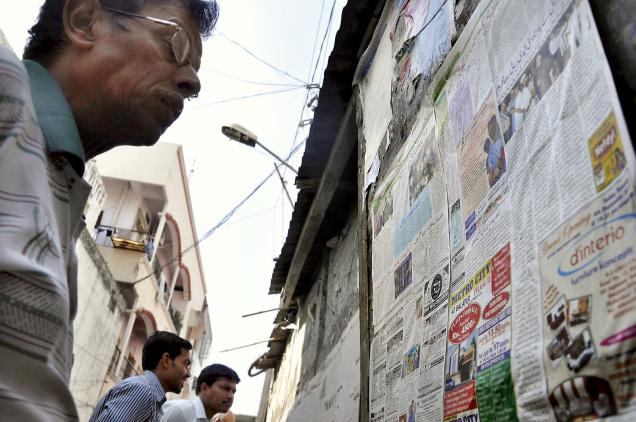
Instead of approaching a wall to read printed pages, there would be these huge consoles that would allow us to enter in whatever section of the newspaper we wish to engage with. Exactly what we do when we stare at the huge displays in Times Square.
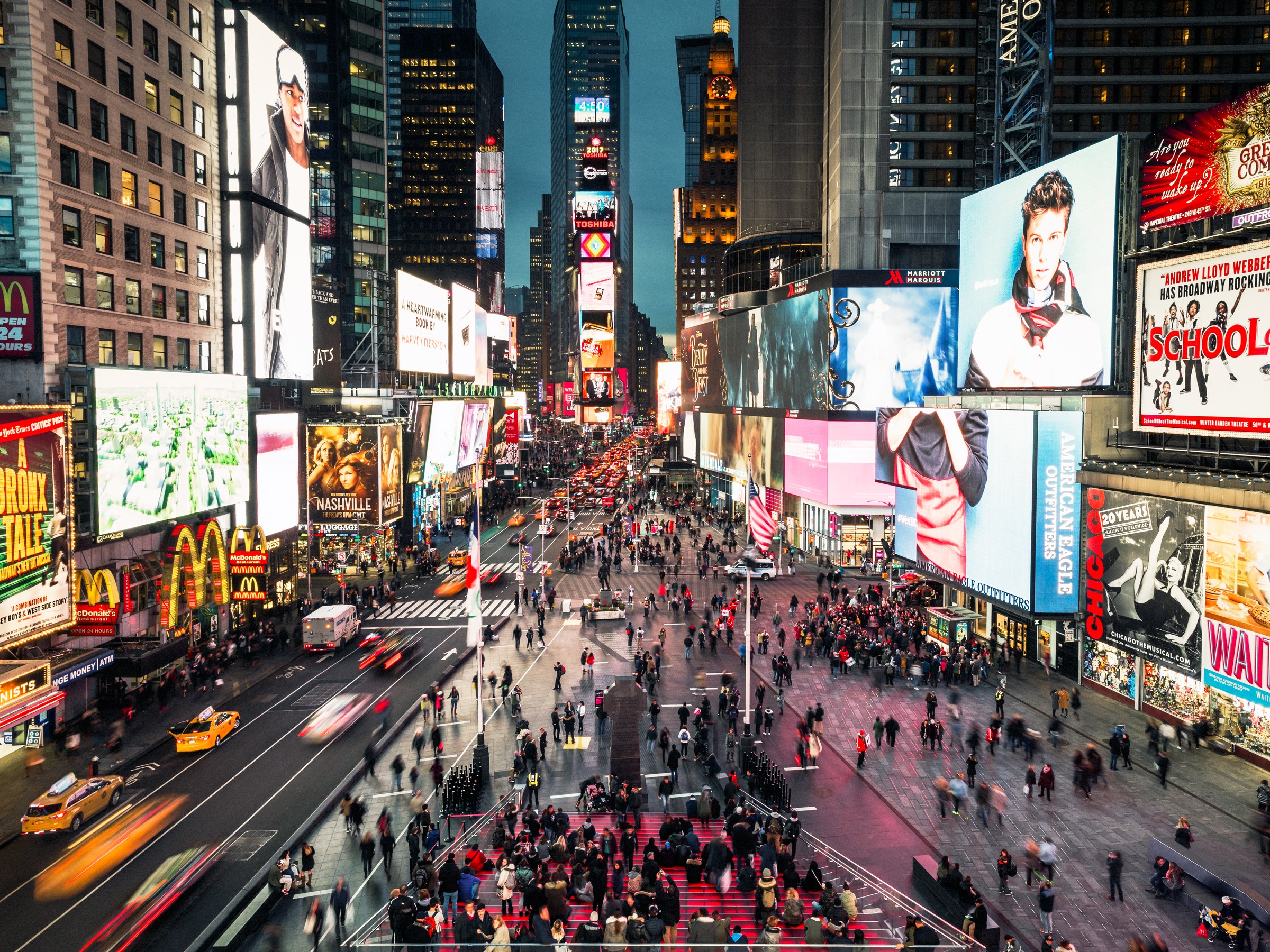
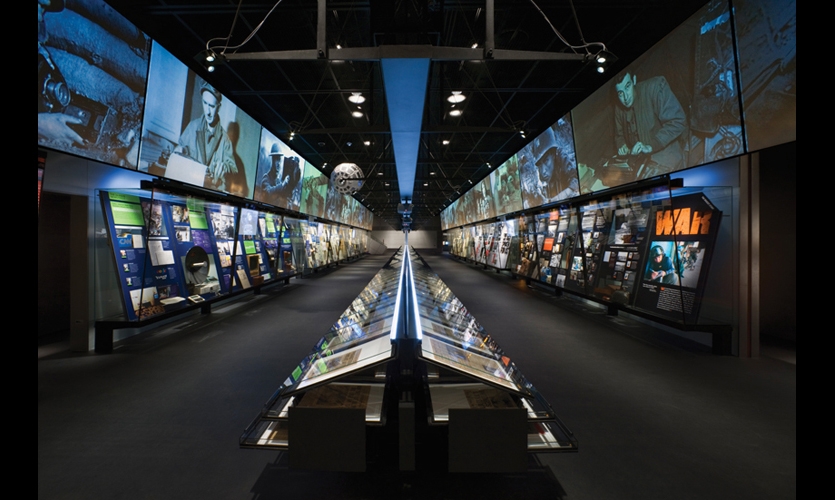
Society of News Design New York City 2018

Mario’s Speaking Engagements

April 18-19, 2018-–Newscamp ,Augsburg, Germany.

May 26, 2018 —Associacion Riograndense de Imprensa, Univesidad de Santa Cruz (Unisc), Brazil

June 3-6, 2018—The Seminar, San Antonio, Texas.

Garcia Media: Over 25 years at your service
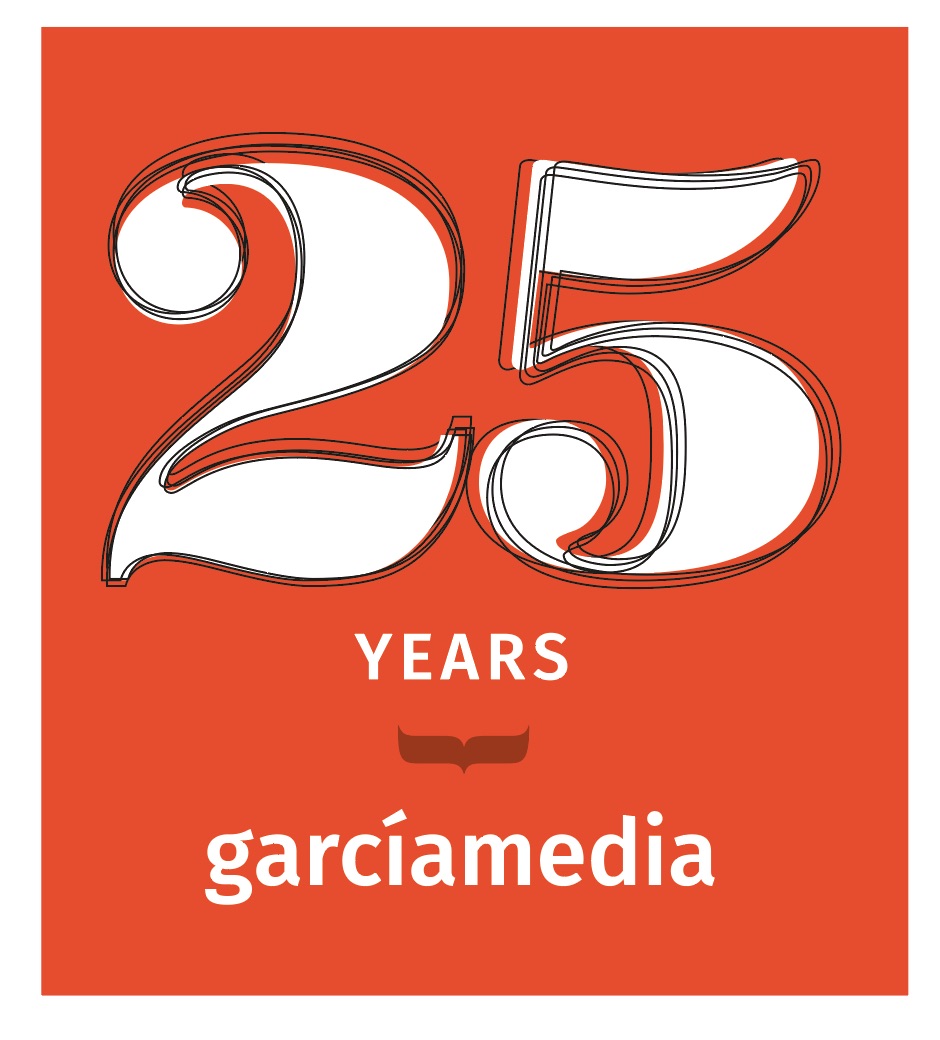
TheMarioBlog post #2774